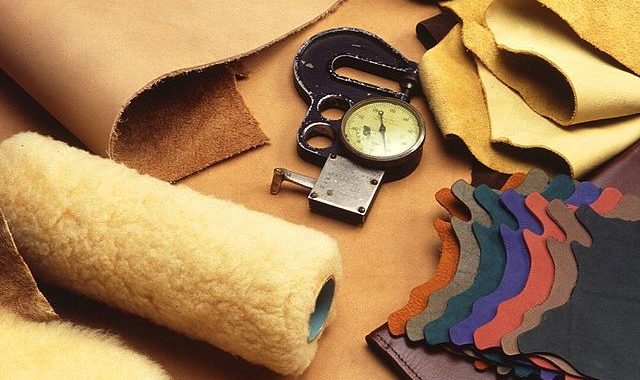The leather of Fleckvieh slaughter cattle is particularly popular. Why is that? And what does the path from the animal to the finished leather product look like?
The Bavarian Broadcasting Corporation or Bayerischer Rundfunk (BR) in German, recently dealt with the topic of leather. Because the leather of Bavarian cattle is particularly in demand among producers.
The TV channel explains why this is so and accompanies the way from the animal to the finished leather product. And this process has many different intermediate stations.
Leather from Fleckvieh better than from Holstein-Schwarzbunten
As the managing director of a skin trading company explains, the skins of southern German cattle are in great demand-because in Bavaria and Baden-Wurttemberg, the Fleckvieh breed is mainly kept. In all other federal states, Holstein-Schwarzbunte are in the absolute majority.
But what is better about the skin of the Fleckvieh?
It is thicker and larger. In addition, the skin of black-colored cattle has shades-and is therefore not suitable for skin-colored leather. What are the different types of leather used for? The BR clarifies: Robust bull skins go to tanneries that produce leather for car seats. Skins of large dairy cows are suitable for leather sofas. Delicate calf skin are used for soft, elastic products such as gloves.
Premium bull leather: Large area, no scratches or injuries
Farmer Günther Ganz from Mindelheim fattens bulls for meat. However, the skin of the animals is also well suited for leather production due to the large area and quality. It is not scratched by barbed wire because the bulls are kept in the stable. And she is not injured by horn thrusts because the bulls are dehorned or genetically hornless, according to the BR.
Especially for today, however, he doesn’t get much money. An average skin price is included in the livestock price, but it only accounts for a fraction.
Moult in the slaughterhouse: Be careful with the knife
In the slaughterhouse, care must also be taken during moulting to ensure that the fur is not damaged-otherwise it will lose value for leather production. An employee takes over the front skins with the knife. Then a special machine, the “roll skinning” is used. It helps the employees to quickly pull off the heavy skins. After all, the skin of a bull weighs around 60 kilos. On the other hand, the machine also avoids damage and cuts to the skin, according to the BR.
No waste product of slaughter: Meaningful use of animal skin
Now they go-of course cooled down to 2 to 4 degrees-in large containers to a hide dealer who sorts them for the tanners. This is done depending on the color and weight and depending on which leather product the skin is suitable for.
If skins have to be preserved for a long time, they are salted. In this way, even times of lower demand can be bridged.
When the skins arrive at the tanners, they usually end up in tanning barrels immediately. The main customers of the goods are automobile and furniture manufacturers. In the end, the supposed waste product is therefore turned to meaningful use.
Source: Agrarheute.com


